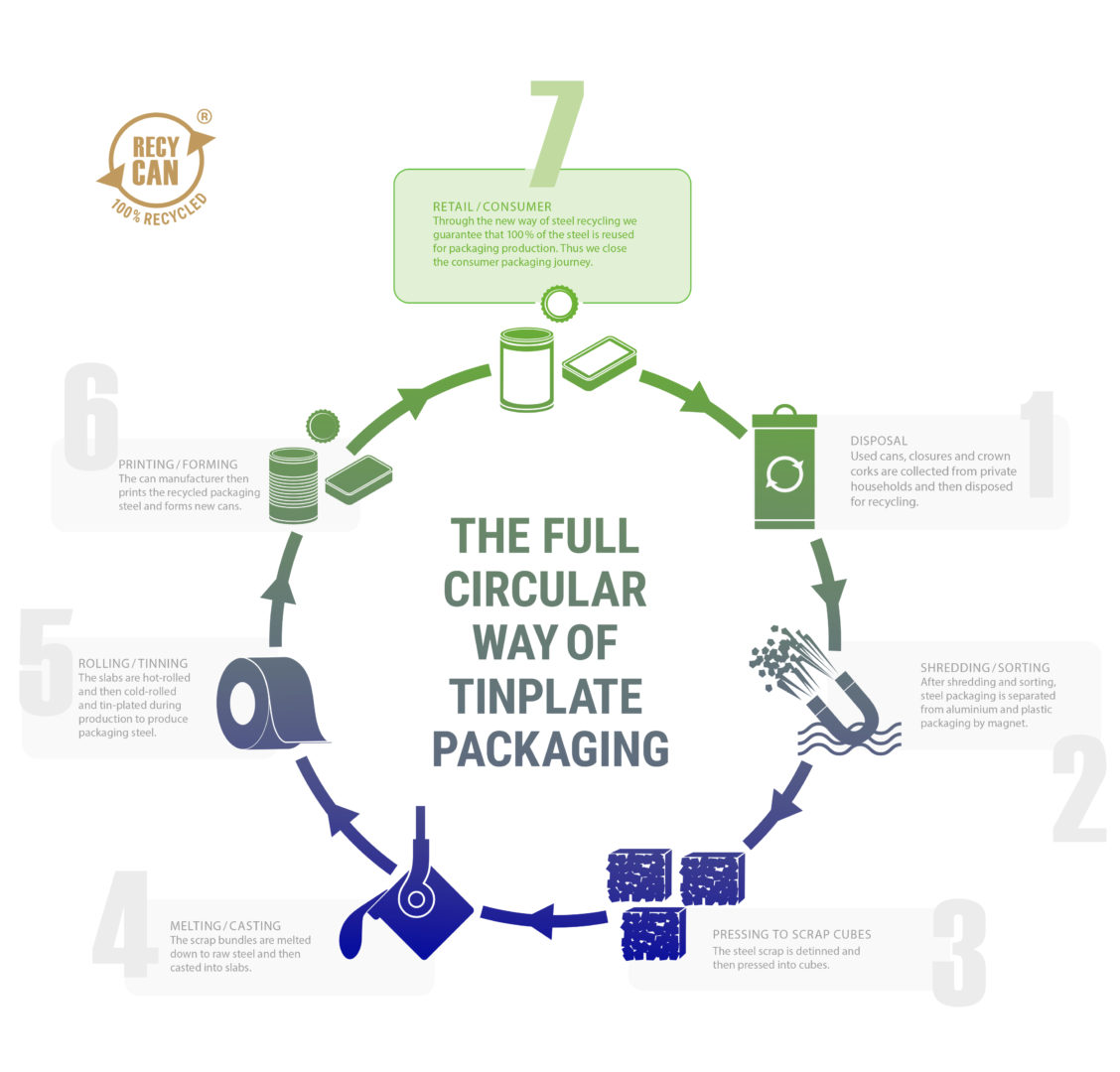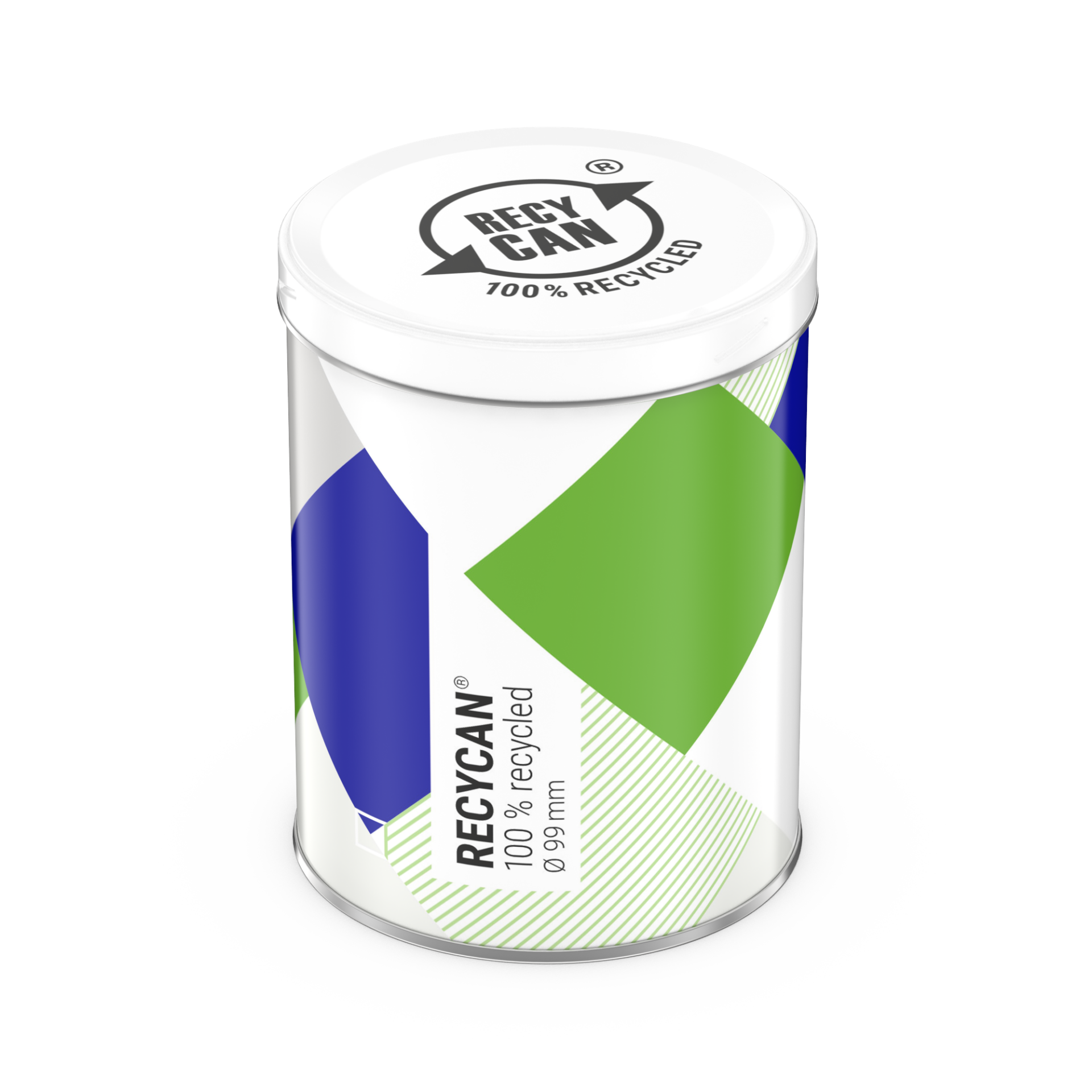Tinplate manufacturer Tthyssenkrupp Rasselstein and packaging manufacturer Hoffmann Neopac have teamed up and developed a concept for a can that pushes recycling to the max: the RecyCan. This is a pilot project in which 100 percent of the steel for packaging is reused in can manufacturing.

The full circular way of tinplate packaging during the RecyCan project.
Image: Hoffmann Neopac AG
“At the request of one of our customers, a concept has arisen through collaboration with one of our longstanding partners, thyssenkrupp Rasselstein GmbH, where steel scrap from the dual systems, such as cans, crown corks or twist-off closures, is turned into a new food can. This addition to our range of cans is very appealing, especially for customers that value sustainability. RecyCan is currently a novelty, not only because it is an innovation but also because it is only available in small quantities to begin with. It allows our customers to have an attractive unique selling point for their products,” explains Mark Aegler, CEO of Hoffmann Neopac.
Thyssenkrupp Rasselstein also regards the pilot project as successful. Dr. Peter Biele, CEO of Thyssenkrupp Rasselstein GmbH, says: “For RecyCan, used packages from households are detinned and melted back down into raw steel at the steel mill. A sophisticated system is then used to turn this back into tinplate, which can be used to manufacture new cans. In other words, RecyCan is an additional method that represents an alternative to proven sustainable steel packaging recycling at the steel mill. Both recycling concepts are characterized by a closed material cycle that allows for the recovery of valuable primary resources. In both cases, the result is nearly complete recycling of the steel packaging material.”











